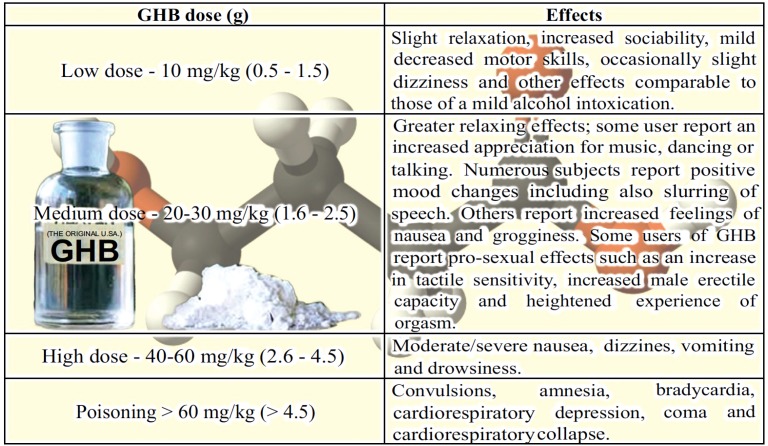Abstract
Background:
The term “chemsex” was coined to indicate the voluntary intake of psychoactive and non psychoactive drugs in the context of recreational settings to facilitate and/or to enhance sexual intercourses mostly among men who have sex with other men (MSM).
Objective:
The authors aimed to review the mechanisms of action, the toxicity and the pattern of use and abuse of substances involved in “chemsex” practice together with the sociocultural background underlying it and the health-related consequences that they may have.
Results:
Gamma-hydroxybutyrate, gamma-butyrolactone,1,4-butanediol, mephedrone, methamphetamine, sildenafil, tadalafil, vardenafil and alkyl nitrites have been described in their role of “chemsex drugs” including pharmacological action and in their implication to impair capacities to chose sexual partners and consensual sex. Moreover, it has been demonstrated that sexual activity over protracted length of time under the influence of chemsex drugs can result in rectal trauma or penile abrasions and a significant increase of the risk of transmission of sexual transmitted diseases, especially in case of condomless intercourses, which are frequent in this context, representing therefore a serious health threat.
Conclusion:
One of the major problems to establish health policy priority interventions for chemsex is the lack of available epidemiological data on the issue. Finally, social actions should be taken in order to break down the barriers that currently exist among chemsex drug users in accessing services, including the shame and stigma often associated with drug use. In conclusion, more specific resources to face high risks of infections and HIV transmission are required in bisexual and homosexual individuals having SUID: sex under the influence of drugs.
Keywords: Chemsex, GHB, mephedrone, crystal meth, erectile dysfunction agents, viagra, poppers
1. Introduction
The term “chemsex”, coming from the contraction of “chemical sex” was coined to indicate the voluntary intake of certain psychoactive and non psychoactive drugs in the context of sex parties and sexual intercourses with the intention of facilitating and/or enhancing the sexual encounter mostly among men who have sex with other men (MSM) [1].
According to different studies, mainly homosexual and bisexual male partygoers use one or more drugs in combination to facilitate prolonged sexual sessions possibly with multiple sexual partners [2], although MSM are more prone to use sex enhancer drugs in comparison to non-MSM. A serious harmful behaviour related to this latter evidence is that those MSM, who are aware of being HIV positive and take anti HIV medication (e.g. Highly Active Anti-Retroviral Therapy, HAART) more commonly use “chemsex” drugs than the ones who are HIV negative or with an unknown status [3-5]. This is mainly done to potentiate physical performance impaired by the disease and to counteract the effects of consequent pharmacological treatment [6].
Whereas in the nineties of the last century the most common abused drugs in the “party and sex” contest were: cannabis, ecstasy, amphetamine and cocaine, more recently “chemsex” has been associated to new psychoactive drugs and sex enhancers such as, γ-hydroxybutyric acid (GHB) and congeners, mephedrone, methamphetamine (commonly called crystal methamphetamine or chrystal meth), erectile dysfunction agents and alkyl nitrites (or poppers) [5, 6].
Within the framework of neuropharmacological, chemical and toxicological aspects of new psychoactive substances, the authors aimed to review the mechanisms of action, the toxicity and the pattern of use and abuse of substances involved in “chemsex” practice together with the sociocultural background underlying it and the health-related consequences that they may have on sexual behaviours in homosexual and bisexual users, including the risk of acquiring sexually transmitted infections.
2. Literature search
The following databases were searched: Pubmed and Scopus (from 1980 to 2016) using key-words: chemsex; gamma-hydroxybutyrate; GHB; gamma-butyrolactone; GBL; 1,4-butanediol; mephedrone, methamphetamine; crystal meth, erectile dysfunction agents, viagra, sildenafil, tadalafil, vardenafil, alkyl nitrites, poppers.
These key-words were searched alone or in association with the main keyword: chemsex.
Several textbooks, non-indexed sources and government websites were also looked through. This search strategy detected about 1000 sources, which were screened to find those deemed the most relevant for the current review. About 60 articles were more deeply examined and the main findings from the reported studies are here presented.
3. Results
Table 1 summarized the “chemsex” drugs” described in this review with their principal characteristic features.
Table 1.
Drugs used in “chemsex” with their street names, chemical structures, preparations and route of administration.
| Common Name | Street Names | Chemical Structure | Preparations | Route of Administration |
|---|---|---|---|---|
| Gamma-Hydroxybutyric acid | GHB, “G” (most common), Gamma-OH, Liquid E, Fantasy, Georgia Home Boy, Grievous Bodily Harm, Liquid X, Liquid Ecstasy, Scoop, Water, Everclear, Great Hormones at Bedtime, GBH, Soap, Easy Lay, Salty Water, G-Riffick, Cherry Meth, and Organic Quaalude, Jib |
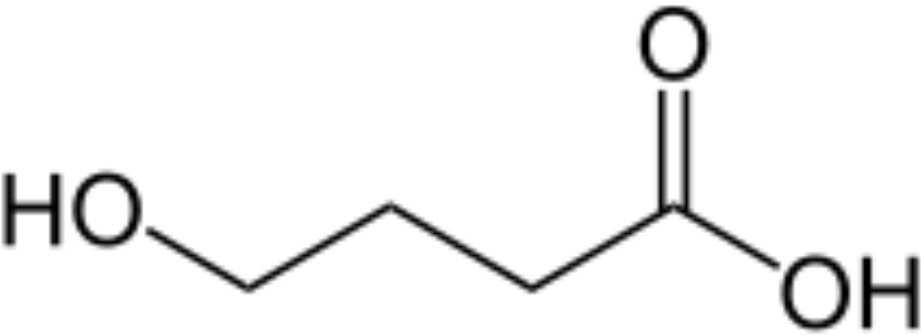
|
White crystalline powder: sodium or potassium salt, clear liquid solution: GHB salt dissolved in water | Usually oral; intravenous |
| Gamma-Butyrolactone | GBL, Blue Nitro, Blue Nitro Vitali ty, Firewater, G3, Gamma G, G.H. Revitalizer, Insom-X, Invigor ate, Paint Stripper, Remforce, Renewtrient, Revivarant, Serenity 2, Thunder, Verve, Weigth Belt Cleaner, revivarant, revivarant G, blue moon, BLO, GH-gold (GHG), genx (genex), verve (verv), liquid go ld, N-force, pure raine, reactive, rejoov, rejuv+nite, regenerize, remedy GH, thunder, X-12 |
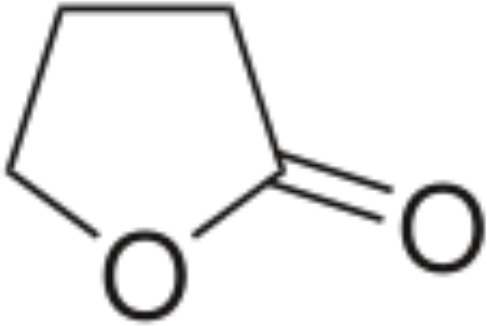
|
Colorless oily liquid | Oral |
| 1,4-butanediol | BlueRaine, Dream On, Fubar, Pine Needle Oil, Rejuv@Nite, Thunder, Cleaner, Enliven, Inner G, One Comma Four, One Four Bee, One Four B-D-O, Revitalize Plus, Serenity, SomatoPro, Soma Solution, Sucol B, Thunder Nectar, Weight Belt Cleaner, White Magic |

|
Colorless viscous liquid | Oral |
| Mephedrone | 4-MMC, meow meow, m-CAT, bounce, bubbles, mad cow |

|
Tablets, powder | Oral, insufflation, IV, rectal, smoking |
| Methamphetamine hydrochloride | Crystal meth, Batu, Blade, Cristy, Crystal, Crystal glass, Glass, Hot ice, Ice, Quartz, Shabu, Shards, Stove top, Tina, Ventana |
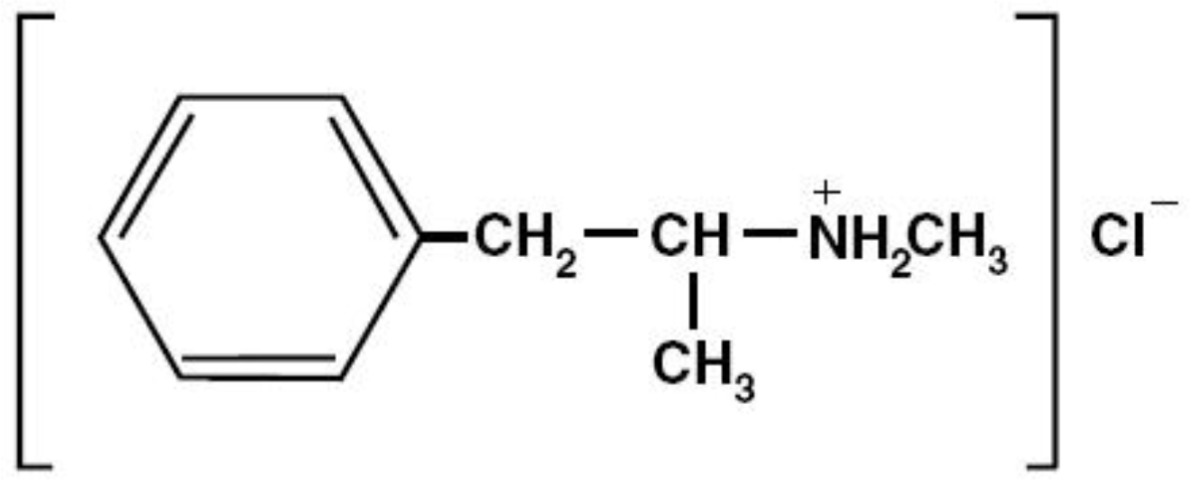
|
Clear chunky crystals | Snorted, smoking, IV |
| Sildenafil | Viagra*, blue diamond, vitamin V, the blue pill |
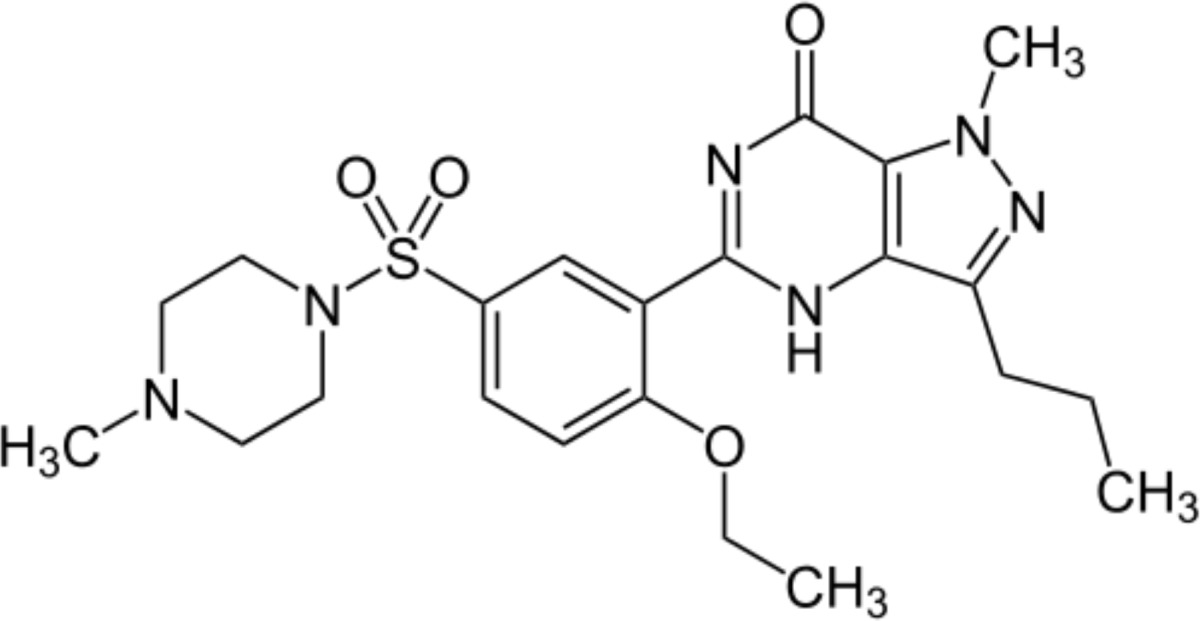
|
Tablet, mouth spray | Oral, Sublingual |
| Tadalafil | Cialis* |
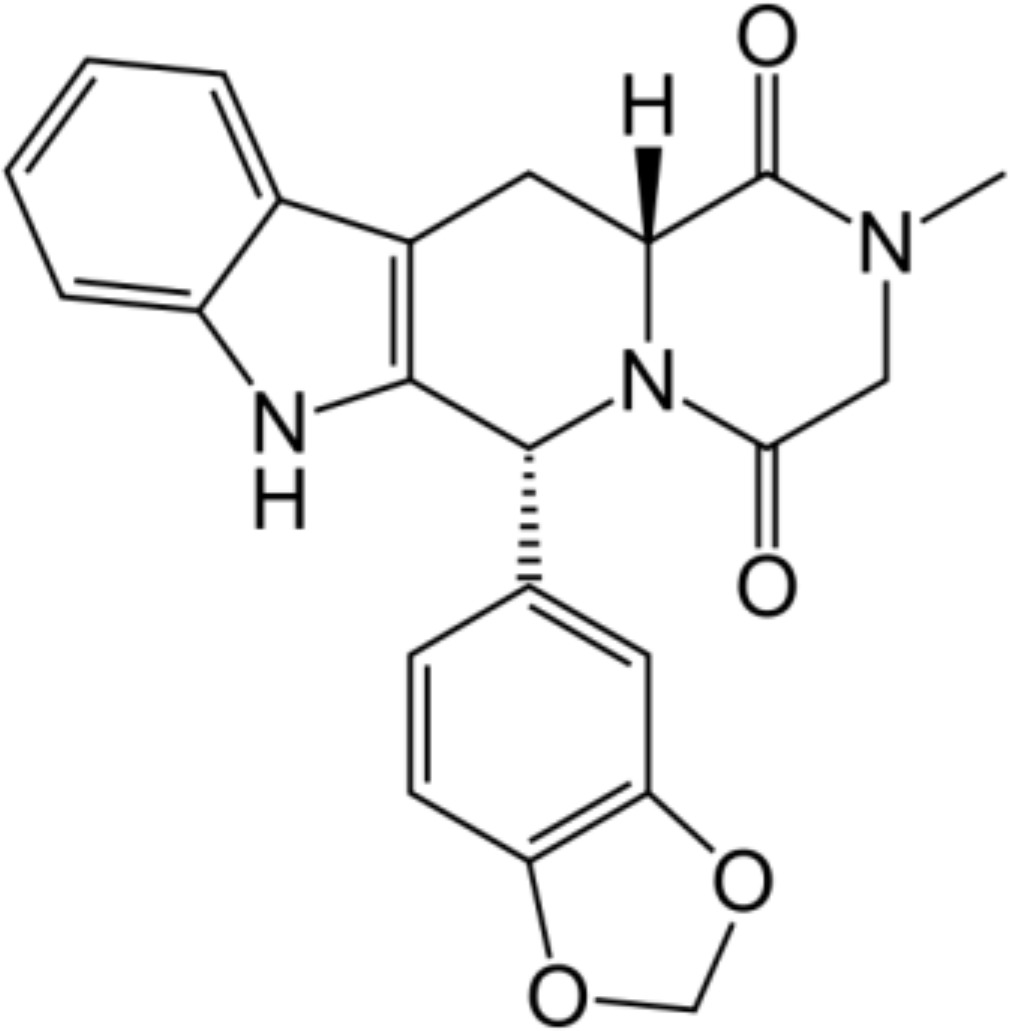
|
Tablet | Oral |
| Vardenafil | Levitra* |
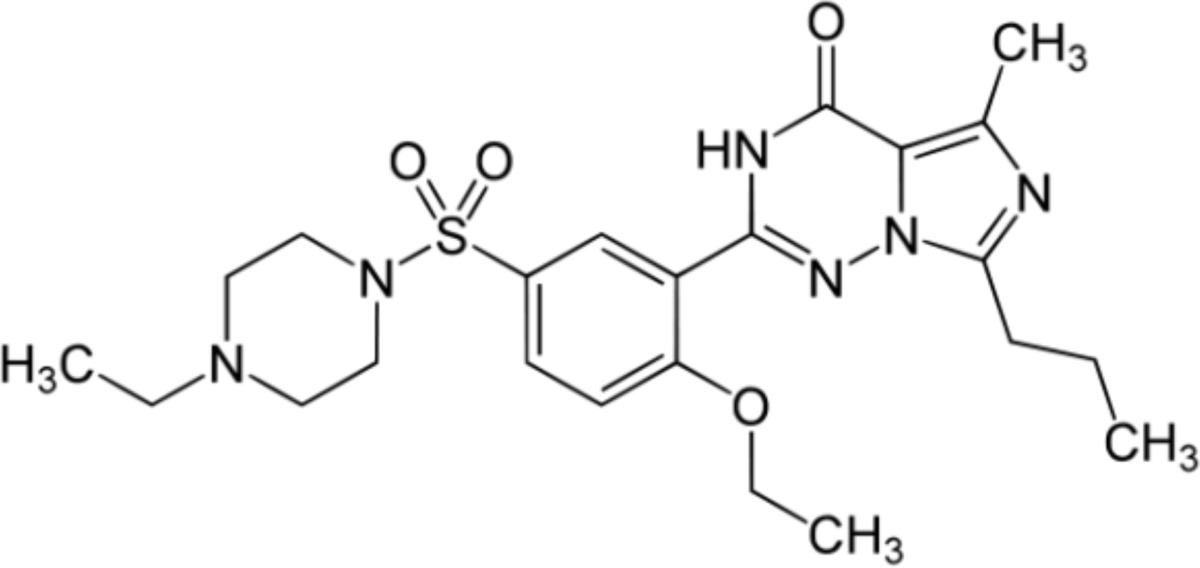
|
Tablet | Oral |
| Amyl nitrite | Amy, high-tech, kix, liquid gold, locker room, poppers, ram, rave, rush, snappers, thrust, TNT |
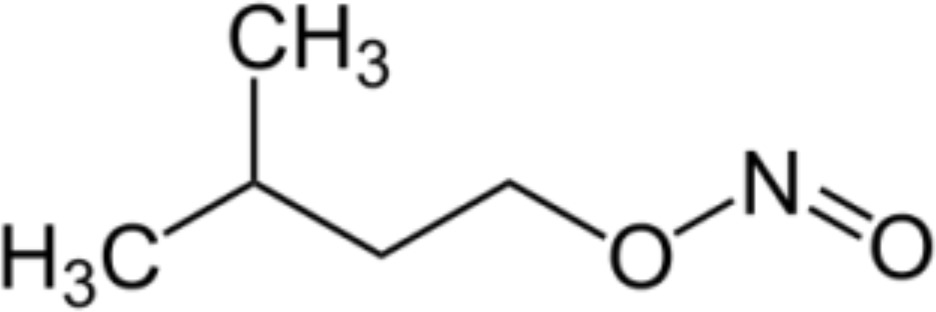
|
Transparent liquid | Inhalation |
| Butyl nitrite | Poppers |

|
Oily liquid | Inhalation |
| Cyclohexyl nitrite | Poppers |
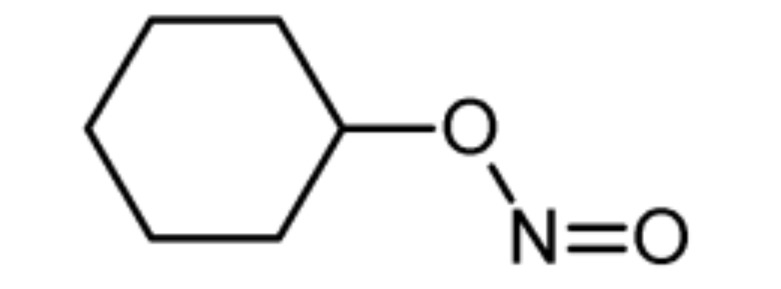
|
Inhalation | |
| Isobutyl nitrite | Poppers |
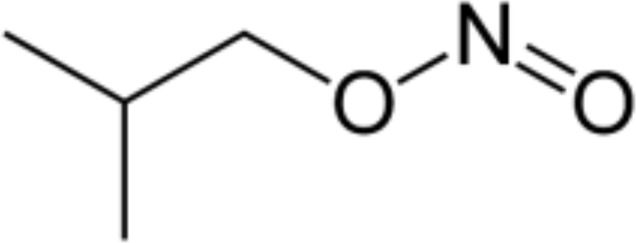
|
Colorless liquid | Inhalation |
| Isopropyl nitrite | Poppers |
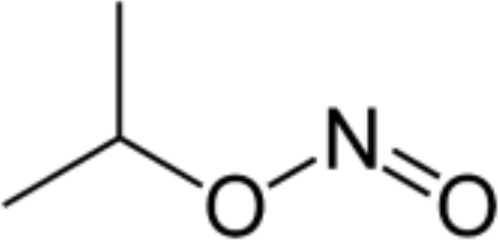
|
Clear pale yellow oil | Inhalation |
| Pentyl nitrite | Poppers |

|
Inhalation |
*Commercial name.
an elevation of mood, an improved mental function and mild sexual stimulation [6].
3.1. Gamma-hydroxybutyric Acid (GHB) and Congeners
GHB, a potent central nervous system depressant acting both as a precursor and a metabolite of the chief inhibitory neurotransmitter gamma-aminobutyric acid (GABA), is quite commonly encountered during forensic examination of living and deceased subjects in recreational and sex scenes (Fig. 1) [7]. GHB prodrugs or precursors, mainly gamma butyrolactone (GBL) and 1,4 butanediol (1,4-BDL), are rapidly converted into GHB within the body after ingestion and for this reason are present in the illegal market together with illicit GHB [8]. GBL is considered more pharmacologically potent than GHB due to its more rapid absorption thanks to its lipophilic property and greater bioavailability and a major duration of action, although its effects last less [9]. GHB interacts with GABAergic neurotransmission and this molecule is considered a GABA-B agonist. Neurons releasing GABA are predominantly located in the hippocampus, cortex and amygdala. GHB receptors are localized in these sites, in pre- and postsynaptic cells. GHB exerts most of its effects through binding to the GABA-B receptors, which are metabotropic transmembrane receptors linked via G-proteins to potassium channels, although also dopamine and serotonin neurotransmission is thought to be implicated. GHB firstly inhibits the dopamine release, however the dopamine later increases according to the dose turnover [10]. GHB is known with numerous street names: Liquid X, Liquid E, Liquid Ecstasy, Easy Lay, G, Vita-G, G-Juice, Georgia Home Boy, Great Hormones, Soap, Gook, Gamma, and is available in colourless, odourless liquid or white powder, tablet and capsule forms [11]. In certain contexts, such as rave parties and gay nightclubs, GHB has been reported to be used by men who look for intentional sex with other men, alone or in combination with other psychoactive drugs with the intention to obtain an energy boost thereby increasing libido, facilitating muscle relaxation, providing more self-assurance and in general facilitating sexual sessions [7]. Indeed, GHB acts in the central nervous system inducing a biphasic time profile with an initial stimulant-like effect related to the simultaneous rise of plasma concentrations with a preponderant disinhibiting action and a later sedative effect unrelated to GHB kinetics [12]. This latter peculiar effect has made GHB one of the most used substance in drug-facilitated sexual assaults, also in the settings of MSM with associated risk of sexually transmitted infection including HIV [6]. After GHB ingestion, its performance and behavioural effects begin approximately 10-30 min. later and according to the dose can last from 1 to 6 hours. The dose-effect curve for GHB is quite high, so that small increases in doses cause disproportionate increases in behavioural effects and toxicity. The effect duration can also be influenced by combinations with other drugs taken at the same time. For recreational purposes, a fixed GHB dosage could be problematic and improper dosage (overdose and poisoning) can lead to serious side effects and even death [7].
Fig. (1).
Dose-related effects of GHB.
Another important aspect worthy of attention is that, differently from several other drugs of abuse where adulteration practices are well known, little information relating to GHB adulteration is currently available and GHB used for non-medical purposes is most commonly synthesized illicitly from GBL. In this context, a recent case of intoxication in the context of “chemsex” involved MSM who consumed GHB adulterated with sildenafil by the drug dealer with the declared intention to enhance expected sexual effects [13]. Chest pain, a severe headache and tachycardia, shortness of breath and dizziness”, never experienced so far after GHB use, were attributed to sildenafil (the adulterant) rather than the claimed active ingredient (GHB). Hence, the illegal market, hypothesizing a synergic action of GHB and sildenafil, aimed to increase the promised GHB effect by adding another pharmacologically active compound, with the risk of causing serious health hazard as in this case.
3.2. Mephedrone
Mephedrone (4-methylmethcathinone; 4-methylephedrone; 4-MMC; 2-(methylamino)-1-(4-methylphenyl)propan-1-one] falls within the category of designer drugs and is structurally similar to cathinone, the main active constituent of the Khat plant (Catha edulis) [14-17]. Mephedrone was synthesized for the first time in 1929 as a ring-substituted cathinone and its chemical structure is strictly linked to that of the phenethylamine family [14].
Similarly to methamphetamine and cathinone, mephedrone is powerfully able to stimulate dopamine release and block its re-uptake through its interaction with the dopamine transporter [18]. Furthermore it presents some affinity for various serotonin receptor subtypes, so that serotonergic signalling may mediate more of mephedrone effects [18]. Hence his subjective effects result in temporary improvements in mental and/or physical function, with distinctive emotional and social effects, similar to those of 3,4 methylenedioxymetamphetamine (Ecstasy MDMA). Among the most common effects induced by mephedrone in users, there are: euphoria, stimulation,
For its “entactogenic effects” the substance is mainly abused in nightclubs and parties alone or in combination with other “chemsex” drugs such as crystal methamphetamine and GHB, and due to its short duration of action and to a tolerance mechanism, users frequently take repeated doses to keep the desired effects [1, 2, 14]. Several sources report its implication in chemsex of MSM, since as self-reported, it can trigger feelings of sexual arousal, increase the longevity of sex and facilitate a higher number of sexual partners [19]. Nevertheless, similarly to all the other psychostimulant and sex enhancing drugs used in the setting of chemsex, users seldom realize the serious health hazard of possible increase of sexually transmitted diseases [19].
It is sold by illegal market, but also by internet web sites as “plant food” as a white or slightly yellowish powder or fine crystals with street names, including “4-MMC”, “MMCAT”, “bubbles”, “Crab”, “meow meow”, and “M-Cat”[20-22].
Cases of mephedrone related fatalities have been described in literature, demonstrating the high potential harm of this substance, alone or in combination with other drugs of abuse, the latter representing the most common scenario especially in chemsex context [14, 23].
3.3. Erectile Dysfunction Agents (Sildenafil, Tadalafil and Vardenafil)
Erectile dysfunction, is “the inability of the male subject to achieve and/or maintain an erection sufficient to conduct a sexual intercourse”. The erection induction involves the production of cyclic guanosine monophosphate (cGMP), mainly stimulated by nitric oxide in the penis corpus cavernosum. Type V phosphodiesterases, enzymes which break the phosphodiester bond in the corpus cavernosum, transform cGMP into inactive metabolites by putting an end to the erection.
The phosphodiesterase V inhibitors have proved decisive in the treatment of erectile dysfunction [24]. The first drug to be marketed was the sildenafil citrate in 1998, with the trade name of Viagra®. It was followed by vardenafil, a structural modification of the progenitor molecule. In fact, the chemical structure of vardenafil differs from that of sildenafil only for the different position of a nitrogen atom and the substituent for the alkyl piperazine ring, that instead of being a methyl group, it is an ethyl group, without any modification of phar-macokinetic properties and pharmacodynamics. Furthermore, vardenafil significantly increases the time it takes from the beginning of vaginal penetration to ejaculation and can therefore be also used in the treatment of premature ejaculation [25]. Finally, tadalafil has been- to date - the last drug of phosphodiesterase type 5 inhibitors to have appeared on the market. Unlike sildenafil and vardenafil, the active ingredient has the longest half-life (approximately 17 hours), allowing a more prolonged effect, estimated at around 36 hours [26].
The huge volume of sales and the patent expiry of sildenafil production opened in fact the market on electronic sites of international standing and in stores specializing in erotic articles and pornographic materials offering drugs at competitive prices compared to those of legally registered pharmaceutical specialties. The belief that these drugs can increase libido and improve sexual performance prompted their recreational use in the context of ‘ChemSex’, to sustain long-lasting sexual activity and reverse the impotence-inducing effects of other substances (e.g., cocaine, antidepressants and HAART) [27, 28]. In this context, recent epidemiological studies also showed that phosphodiesterase V inhibitors use increased in communities of men having sex with men (MSM) and in people living with HIV with a simultaneous consumption of other “chemsex “ drugs such as methamphetamine (crystal methampheratine or chrystal meth) alkyl nitrites (poppers), ketamine, GHB/GBL (gamma-hydroxybutyric acid/γ-butyrolactone) [6, 29]. These two occurrences have posed a serious concern regarding users health and safety. First, there is an increased risk of drug-drug interaction which can lead to an enhanced cardiotoxicity caused by erective dysfunction drugs [6]. Second, since the use of sildenafil, tadalafil and vardenafil has also been associated with high-risk sexual behaviour, this fact has been linked to HIV seroconversion in MSM [30]. Nevertheless, the recreational use of phosphodiesterase V inhibitors in association with others “chemsex” does not solely occur within the environments of MSM, but a non negligible portion of recreational users are heterosexual men [31]. Motivations for use are similar to those of MSM: curiosity, increased erectile rigidity, counteracting the effects of drugs/alcohol that may attenuate erection, increase erectile sensation, increased libido, enhance self-esteem, decrease performance anxiety, impress/satisfy sexual partner). However, also the associated risks are very similar: a vast majority of users buy these drugs without any medical advice on internet with the risk of:
3.4. Methamphetamine
Methamphetamine (also called meth, crystal meth, chalk and ice), the N methyl derivative of amphetamine is an extremely additive psychoactive drug discovered at the end of 19th century. Its medical use as anorectic drug and in narcolepsy has been banned since several decades due to the high abuse liability and the sever health challenges cause by the drug use [33].
Methamphetamine is a selective agonist of trace amine-associated receptor 1 (TAAR1), whose activation increases cyclic adenosine monophosphate production and inhibits the reuptake of dopamine, norepinephrine and serotonin by reversing the direction of their transporters [34]. In this way, the substance induces a substantial release of those neuro-transmitters in the CNS synapses exerting its euphoric, empathogenic, and hallucinogenic properties on users [34].
Involvement of crystal meth in “chemsex” scenarios has been reported since more than one decade as sole substance or in association with the other typical club drugs here described. Smoking, snorting or injecting are the most common ways of consumption, often in combination with mephedrone and GHB [6]. Whereas GHB is a nervous system depressant, even if euphorizing at low doses, mephedrone and crystal meth are stimulants. All three can trigger feelings of excitement and among many users can also facilitate intense feelings of sexual arousal [35].
Recreational use of crystal meth has been recently reported in both homosexual and bisexual men as sexual desire enhancer and inhibition reducer [36]. However, as above reported for erectile dysfunction agents, methamphetamine use in this context has been shown to contribute to a rise in high-risk sexual behaviours as well as in the incidence of HIV [37] with possible interaction with HAART [38].
Apart from these severe health related consequences in the use of crystal meth in chemsex context, the main concern related to the use of methamphetamine are the long-term consequences on brain due to the damage to dopamine and serotonin release in nerve terminals, gliosis, and apoptosis [34]. Not only these, but other mechanisms such as hyper-thermia, glutamate release, reactive oxygen species, reactive nitrogen species seem to be involved in its neurotoxicity.
Among the described substances implicated in the context of chemsex, methamphetamine is doubtless the most dangerous compound for both its additive and neurotoxic effects and health consequences both in case of healthy and frail individuals.
3.5. Alkyl Nitrites (poppers)
Alkyl nitrites are a chemical class of substances colloquially known as “poppers” (Rush, Bolt, Locker Room, Bullet, Aroma of Men, Dr. Bananas, Cum, Heart-On), whose basic pharmacological action of the nitrites is relaxation of vascular smooth muscles [39]. The route of administration is inhalation of the vapour of the volatilized organic liquid. Indeed, for their rapid onset, short-acting potent vasodilators, disinhibiting effect, poppers have been consumed in recreational and sexual settings since the 1970s [40].
In the 1990s the popularity of alkyl nitrites significantly increased for both heterosexual and homosexual sexual intercourses. Interestingly, among the “chemsex” drugs, these ones are frequently used by youngsters too, for the misperception of the products harmlessness. Nitrites have been reported by many women to be useful for abandonment to a full sexual experience. Furthermore, anal penetration becomes easier, probably from a combination of nitrites actions on the anal sphincter and decreased pain perception [40]. These two actions plus mild hallucinatory sensations (e.g. “visions of bright colours, often containing symbolic representations of the sexual moment”) made the products highly popular in gay discos to enjoy at most music, lights, other drugs and social-sexual excitement [40].
Among poppers, the most common sold are: amyl nitrite (isoamyl nitrite, isopentyl nitrite), but also cyclohexyl nitrite, isobutyl nitrite (2-methylpropyl nitrite), isopropyl nitrite (2-propyl nitrite), and less frequently butyl nitrite.
Pharmacologically, alkyl nitrites act inducing relaxation of vascular smooth muscles, with an indirect effect on heart, by systemic arterioles relaxation resulting in a decrease of blood pressure, reflex tachycardia and a drop in the activity of the left ventricle. The peak action in blood pressure occurs in 30 seconds, with an average increase of 30 mm of systolic pressure, returning to normal within two minutes. When using these substances individuals feel different sensations like warmth, dizziness and an altered heartbeat and facial blush. This response can range from high pleasure to moderate nausea and headaches according to the scenario and the expectations [40].
Since these illicitly used products are unregulated in the majority of countries, the implications on user health and associated risks can be extremely serious.
Pharmacologically, alkyl nitrites can interact with other drugs, such as prescription vasodilators, like erectile dysfunction agents (sildenafil, tadalafil and vardenafil), also frequently used in “chemsex” scenarios and this can result in a dangerous decrease of blood pressure and the possibility of a stroke or a heart attack [27].
Among the most common side effects due to poppers headaches have been reported as acute side effects, whereas several cases of retinal toxicity, retinopathy and toxic maculopathy have been described as long-term effect [41-45]. The mechanisms of toxicity remain unclear with the hypotheses of a modulation of retinal cell phototransduction or of an increase in light toxicity susceptibility [43]. As a consequence of retinal toxicity, a prolonged visual loss as a result of damage to foveal photoreceptors shortly after inhaling poppers has been described [42].
Recently, an animal study focused on the action of some alkyl nitrites (isobutyl nitrite, isoamyl nitrite, and butyl nitrite) on the central nervous system and of their possible abuse potential [46] Mice treated with the test substances (50 mg/kg, i.p.) showed a significantly increased drug-paired place preference. Furthermore, greater levels of dopamine were released by striatal region synaptosomes in response to isobutyl nitrite treatment. Therefore, according to these findings alkyl nitrites could lead to psychological dependence and dopaminergic effects.
4. Sociocultural background
Very recently, different journals have published editorials, letters to the editor, short communications etc. focusing on public health concerns raised by chemsex phenomenon and different sources have demonstrated that the most involved subjects in this type of practice are MSM and bisexual men, especially within HIV positive individuals.
An extensive epidemiological survey on HIV-diagnosed adults (2248 MSM, 373 heterosexual men and 637 women) recruited from UK clinics in 2011-2012 showed that half of MSM (1138, 50.6%) reported use of recreational drugs and a quarter of them simultaneously consumed at least three types of drugs [47-49]. This was objectively shown in cities such as London, Berlin, San Francisco, Los Angeles and Sydney, but the phenomenon is spreading internationally with the concurrent boom of crystal methamphetamine and mephedrone use and high risk sexual practices [50-53].
In this concern, British gay men using crystal methamphetamine, mephedrone or GHB/GBL either immediately before or during sex self-reported to have been the victim of non-consensual sex (3 out of 30 interviewed), in a situation where consciousness was impaired by the setting and drug use itself and led them to unwittingly take risks of transmitted infections of physical traumas [54, 55].
Indeed, sexual activity over protracted length of time under the influence of chemsex drugs can result in rectal trauma or penile abrasions and a significant increase of the risk of transmission of sexual transmitted diseases, especially in case of condomless intercourses, which are frequent in this context, representing therefore a serious health threat [6].
Recent attention has also been posed on sexually transmissible enteric infections among the pathogens whose transmission may be associated with chemsex. An example is represented by Shigella flexneri, which is one of the four species of Gram-negative bacterium of the genus Shigella that can cause severe bacillary dysentery in humans. In a study conducted in a small community of British patients, 80% were sexually active MSM, with multiple partners, found through social media networking sites and 60% 42 were also HIV-positive and looking for positive partners for unprotected sex with the use of “chemsex drugs” [56, 57].
All these evidences require careful consideration in the light of health policy interventions and harm reduction practices since MSM engaged in “chemsex” with impaired capacities to chose sexual partners and consensual sex should need more specific resources to face high risks of infections and HIV transmission [54].
Another final concern worthy of attention is represented by the interaction between drugs implicated in chemsex and HIV medications not only in terms of drug-drug interaction but also for the adherence to the therapy by HIV-positive individuals engaging in chemsex. Lower rates of adherence to HIV medications, especially in case of poly-drug use have been demonstrated together with drug-drug interactions. About this, an exaggerated response to GHB has been observed in a HIV positive individual treated with protease inhibitors such as ritonavir or efavirenz, which inhibit CYP450 enzymatic system blocking in this way GHB first pass metabolism. On the other hand, GHB/GBL consumption may precipitate seizure-like activity in HIV-positive patients with predisposing seizure disorders or with opportunistic infections that may lower seizure threshold (e.g. toxoplasmosis, cryptococcal meningitis) [58].
Conclusion
The “chemsex” phenomenon firstly coined on the London gay scene and rapidly diffused to many other larger cities had brought with it numerous concerns. They derive not only from the actual risk of harm due to the metabolic pathways of different involved drug, but also for the specific features of the recreational drugs used including the amount of consumed compound, the route of administration, drug bioavailability, drug pharmacokinetics, drug half life and finally polydrug use [6]. Moreover, special attention should be paid to the possible interaction between drugs implicated in chemsex and HIV medications (e.g. HAART) not only in terms of drug-drug interaction, but also for the adherence to the therapy by HIV-positive individuals engaging in chemsex.
As reported in different Sections, serious health threat can be also represented by the significantly higher hazard of sexually transmitted diseases and enteric infections.
One of the major problems to establish health policy priority interventions for chemsex is the lack of available epidemiological data on the issue. Finally, social actions should be taken in order to break down the barriers that currently exist among chemsex drug users in accessing services, including the shame and stigma often associated with drug use.
In conclusion, similarly to other acronyms already coined to indicate actions taken under the effects of drugs such as driving (driving under the influence of drugs - DUID), we here propose to abbreviate the overwhelming desire of having sex under the influence of drugs (chemsex) as “SUID”: sex under the influence of drugs.
ACKNOWLEDGEMENTS
The authors thank Michele Sciotti for his precious technical help.
CONFLICT OF INTEREST
There are no financial or other relations that could lead to a conflict of interest.
REFERENCES
- 1.McCall H., Adams N., Mason D., Willis J. What is chemsex and why does it matter? BMJ. 2015;351:h5790. doi: 10.1136/bmj.h5790. [http://dx.doi.org/ 10.1136/bmj.h5790]. [PMID: 26537832]. [DOI] [PubMed] [Google Scholar]
- 2.Bourne A., Reid D., Hickson F., Torres-Rueda S., Weatherburn P. Illicit drug use in sexual settings (chemsex) and HIV/STI transmission risk behaviour among gay men in South London: findings from a qualitative study. Sex. Transm. Infect. 2015;91(8):564–568. doi: 10.1136/sextrans-2015-052052. [http://dx.doi.org/10.1136/sextrans-2015-052052]. [PMID: 26163510]. [DOI] [PubMed] [Google Scholar]
- 3.Hunter L.J., Dargan P.I., Benzie A., White J.A., Wood D.M. Recreational drug use in men who have sex with men (MSM) attending UK sexual health services is significantly higher than in non-MSM. Postgrad. Med. J. 2014;90(1061):133–138. doi: 10.1136/postgradmedj-2012-131428. [http://dx. doi.org/10.1136/postgradmedj-2012-131428]. [PMID: 24390619]. [DOI] [PubMed] [Google Scholar]
- 4.Kirby T., Thornber-Dunwell M. High-risk drug practices tighten grip on London gay scene. Lancet. 2013;381(9861):101–102. doi: 10.1016/s0140-6736(13)60032-x. [http:// dx.doi.org/10.1016/S0140-6736(13)60032-X]. [PMID: 23320280]. [DOI] [PubMed] [Google Scholar]
- 5.Theodore P.S., Durán R.E., Antoni M.H. Drug use and sexual risk among gay and bisexual men who frequent party venues. AIDS Behav. 2014;18(11):2178–2186. doi: 10.1007/s10461-014-0779-y. [http://dx.doi.org/10.1007/ s10461-014-0779-y]. [PMID: 24770947]. [DOI] [PubMed] [Google Scholar]
- 6.Bracchi M., Stuart D., Castles R., Khoo S., Back D., Boffito M. Increasing use of party drugs in people living with HIV on antiretrovirals: a concern for patient safety. AIDS. 2015;29(13):1585–1592. doi: 10.1097/QAD.0000000000000786. [http://dx.doi.org/10.1097/QAD.0000000000000786]. [PMID: 26372268]. [DOI] [PubMed] [Google Scholar]
- 7.Busardò F.P., Jones A.W. GHB pharmacology and toxicology: acute intoxication, concentrations in blood and urine in forensic cases and treatment of the withdrawal syndrome. Curr. Neuropharmacol. 2015;13(1):47–70. doi: 10.2174/1570159X13666141210215423. [http://dx.doi.org/10.2174/ 1570159X13666141210215423]. [PMID: 26074743]. [DOI] [PMC free article] [PubMed] [Google Scholar]
- 8.Corkery J.M., Loi B., Claridge H., Goodair C., Corazza O., Elliott S., Schifano F. Gamma hydroxybutyrate (GHB), gamma butyrolactone (GBL) and 1,4-butanediol (1,4-BD; BDO): A literature review with a focus on UK fatalities related to non-medical use. Neurosci. Biobehav. Rev. 2015;53:52–78. doi: 10.1016/j.neubiorev.2015.03.012. [http://dx. doi.org/10.1016/j.neubiorev.2015.03.012]. [PMID: 25843781]. [DOI] [PubMed] [Google Scholar]
- 9.Brunt T.M., van Amsterdam J.G., van den Brink W. GHB, GBL and 1,4-BD addiction. Curr. Pharm. Des. 2014;20(25):4076–4085. doi: 10.2174/13816128113199990624. [http://dx.doi.org/10.2174/13816128113199990624]. [PMID: 24001290]. [DOI] [PubMed] [Google Scholar]
- 10.Hutchins D.A., Rayevsky K.S., Sharman D.F. The effect of sodium -hydroxybutyrate on the metabolism of dopamine in the brain. Br. J. Pharmacol. 1972;46(3):409–415. doi: 10.1111/j.1476-5381.1972.tb08138.x. [http://dx.doi.org/ 10.1111/j.1476-5381.1972.tb08138.x]. [PMID: 4656604]. [DOI] [PMC free article] [PubMed] [Google Scholar]
- 11.Busardo F.P., Kyriakou C. GHB in biological specimens: which cut-off levels should be taken into consideration in Forensic Toxicological Investigation? Recent Pat. Biotechnol. 2014;8(3):206–214. doi: 10.2174/1872208309666150504143155. [http://dx.doi.org/10.2174/1872208309666150504143155]. [PMID: 27099144]. [DOI] [PubMed] [Google Scholar]
- 12.Pichini S., Farré M., Abanades S., Pacifici R., Zuccaro P., Langohr K., de la Torre R. Immunomodulating properties of gamma-hydroxybutyrate (GHB), flunitrazepam and ethanol in club drugs users. Addict. Biol. 2010;15(3):336–345. doi: 10.1111/j.1369-1600.2010.00210.x. [http://dx.doi.org/10. 1111/j.1369-1600.2010.00210.x]. [PMID: 20456291]. [DOI] [PubMed] [Google Scholar]
- 13.Pichini S., Marchei E., Pacifici R., Marinelli E., Busardò F.P. Chemsex intoxication involving sildenafil as an adulterant of GHB. Drug Test. Anal. 2016 doi: 10.1002/dta.2054. [ahead of print]. [http://dx.doi.org/10.1002/ dta.2054]. [PMID: 27527498]. [DOI] [PubMed] [Google Scholar]
- 14.Busardò F.P., Kyriakou C., Napoletano S., Marinelli E., Zaami S. Mephedrone related fatalities: a review. Eur. Rev. Med. Pharmacol. Sci. 2015;19(19):3777–3790. [PMID: 26502870]. [PubMed] [Google Scholar]
- 15.Weaver M.F., Hopper J.A., Gunderson E.W. Designer drugs 2015: assessment and management. Addict. Sci. Clin. Pract. 2015;10:8. doi: 10.1186/s13722-015-0024-7. [http://dx.doi.org/10.1186/s13722-015-0024-7]. [PMID: 25928069]. [DOI] [PMC free article] [PubMed] [Google Scholar]
- 16.Patel N.B. Mechanism of action of cathinone: the active ingredient of khat (Catha edulis). East Afr. Med. J. 2000;77(6):329–332. doi: 10.4314/eamj.v77i6.46651. [PMID: 12858935]. [DOI] [PubMed] [Google Scholar]
- 17.Kelly J.P. Cathinone derivatives: a review of their chemistry, pharmacology and toxicology. Drug Test. Anal. 2011;3(7-8):439–453. doi: 10.1002/dta.313. [http://dx.doi.org/10.1002/dta.313]. [PMID: 21755607]. [DOI] [PubMed] [Google Scholar]
- 18.Dybdal-Hargreaves N.F., Holder N.D., Ottoson P.E., Sweeney M.D., Williams T. Mephedrone: Public health risk, mechanisms of action, and behavioral effects. Eur. J. Pharmacol. 2013;714(1-3):32–40. doi: 10.1016/j.ejphar.2013.05.024. [http://dx.doi.org/10.1016/j.ejphar.2013.05.024]. [PMID: 23764466]. [DOI] [PubMed] [Google Scholar]
- 19.Bourne A., Reid D., Hickson F., Torres-Rueda S., Weatherburn P. Illicit drug use in sexual settings (chemsex) and HIV/STI transmission risk behaviour among gay men in South London: findings from a qualitative study. Sex. Transm. Infect. 2015;91(8):564–568. doi: 10.1136/sextrans-2015-052052. [http://dx.doi.org/10.1136/sextrans-2015-052052]. [PMID: 26163510]. [DOI] [PubMed] [Google Scholar]
- 20.Schifano F., Albanese A., Fergus S., Stair J.L., Deluca P., Corazza O., Davey Z., Corkery J., Siemann H., Scherbaum N., Farre M., Torrens M., Demetrovics Z., Ghodse A.H. Mephedrone (4-methylmethcathinone; meow meow): chemical, pharmacological and clinical issues. Psychopharmacology (Berl.) 2011;214(3):593–602. doi: 10.1007/s00213-010-2070-x. [http://dx.doi.org/10.1007/s00213-010-2070-x]. [PMID: 21072502]. [DOI] [PubMed] [Google Scholar]
- 21.Angoa-Pérez M., Kane M.J., Francescutti D.M., Sykes K.E., Shah M.M., Mohammed A.M., Thomas D.M., Kuhn D.M. Mephedrone, an abused psychoactive component of bath salts and methamphetamine congener, does not cause neurotoxicity to dopamine nerve endings of the striatum. J. Neurochem. 2012;120(6):1097–1107. doi: 10.1111/j.1471-4159.2011.07632.x. [PMID: 22191803]. [DOI] [PMC free article] [PubMed] [Google Scholar]
- 22.Vardakou I., Pistos C., Spiliopoulou Ch. Drugs for youth via Internet and the example of mephedrone. Toxicol. Lett. 2011;201(3):191–195. doi: 10.1016/j.toxlet.2010.12.014. [http://dx.doi.org/10.1016/j.toxlet.2010.12.014]. [PMID: 21187132]. [DOI] [PubMed] [Google Scholar]
- 23.Vaiano F., Busardò F.P., Palumbo D., Kyriakou C., Fioravanti A., Catalani V., Mari F., Bertol E. A novel screening method for 64 new psychoactive substances and 5 amphetamines in blood by LC-MS/MS and application to real cases. J. Pharm. Biomed. Anal. 2016;129:441–449. doi: 10.1016/j.jpba.2016.07.009. [http://dx.doi.org/10.1016/j.jpba.2016.07.009]. [PMID: 27490334]. [DOI] [PubMed] [Google Scholar]
- 24.Kouvelas D., Goulas A., Papazisis G., Sardeli C., Pourzitaki C. PDE5 inhibitors: in vitro and in vivo pharmacological profile. Curr. Pharm. Des. 2009;15(30):3464–3475. doi: 10.2174/138161209789206971. [http://dx.doi.org/10. 2174/138161209789206971]. [PMID: 19860692]. [DOI] [PubMed] [Google Scholar]
- 25.Ashour A.E., Rahman A.F., Kassem M.G. Vardenafil dihydro-chloride. Profiles Drug Subst. Excip. Relat. Methodol. 2014;39:515–544. doi: 10.1016/B978-0-12-800173-8.00009-X. [http://dx.doi.org/10.1016/B978-0-12-800173-8.00009-X]. [PMID: 24794912]. [DOI] [PubMed] [Google Scholar]
- 26.Yuan J., Zhang R., Yang Z., Lee J., Liu Y., Tian J., Qin X., Ren Z., Ding H., Chen Q., Mao C., Tang J. Comparative effectiveness and safety of oral phosphodiesterase type 5 inhibitors for erectile dysfunction: a systematic review and network meta-analysis. Eur. Urol. 2013;63(5):902–912. doi: 10.1016/j.eururo.2013.01.012. [http://dx.doi.org/ 10.1016/j.eururo.2013.01.012]. [PMID: 23395275]. [DOI] [PubMed] [Google Scholar]
- 27.Romanelli F., Smith K.M. Recreational use of sildenafil by HIV-positive and -negative homosexual/bisexual males. Ann. Pharmacother. 2004;38(6):1024–1030. doi: 10.1345/aph.1D571. [http://dx.doi.org/10.1345/ aph.1D571]. [PMID: 15113986]. [DOI] [PubMed] [Google Scholar]
- 28.Fisher D.G., Malow R., Rosenberg R., Reynolds G.L., Farrell N., Jaffe A. Recreational viagra use and sexual risk among drug abusing men. Am. J. Infect. Dis. 2006;2(2):107–114. doi: 10.3844/ajidsp.2006.107.114. [http://dx. doi.org/10.3844/ajidsp.2006.107.114]. [PMID: 17191089]. [DOI] [PMC free article] [PubMed] [Google Scholar]
- 29.Chu P.L., McFarland W., Gibson S., Weide D., Henne J., Miller P., Partridge T., Schwarcz S. Viagra use in a community-recruited sample of men who have sex with men, San Francisco. J. Acquir. Immune Defic. Syndr. 2003;33(2):191–193. doi: 10.1097/00126334-200306010-00012. [http://dx.doi. org/10.1097/00126334-200306010-00012]. [PMID: 12794553]. [DOI] [PubMed] [Google Scholar]
- 30.Fisher D.G., Reynolds G.L., Napper L.E. Use of crystal methamphetamine, Viagra, and sexual behavior. Curr. Opin. Infect. Dis. 2010;23(1):53–56. doi: 10.1097/QCO.0b013e328334de0b. [http://dx.doi.org/10.1097/QCO. 0b013e328334de0b]. [PMID: 19918176]. [DOI] [PMC free article] [PubMed] [Google Scholar]
- 31.Harte C.B., Meston C.M. Recreational use of erectile dysfunction medications in undergraduate men in the United States: characteristics and associated risk factors. Arch. Sex. Behav. 2011;40(3):597–606. doi: 10.1007/s10508-010-9619-y. [http://dx.doi.org/10.1007/s10508-010-9619-y]. [PMID: 20358273]. [DOI] [PMC free article] [PubMed] [Google Scholar]
- 32.Solomon H., Man J., Gill J., Jackson G. Viagra on the internet: unsafe sexual practice. Int. J. Clin. Pract. 2002;56(5):403–404. [PMID: 12137453]. [PubMed] [Google Scholar]
- 33.Hanson G.R., Rau K.S., Fleckenstein A.E. The methamphetamine experience: a NIDA partnership. Neuropharmacology. 2004;47(Suppl. 1):92–100. doi: 10.1016/j.neuropharm.2004.06.004. [http://dx.doi.org/10.1016/j.neuropharm.2004. 06.004]. [PMID: 15464128]. [DOI] [PubMed] [Google Scholar]
- 34.Yu S., Zhu L., Shen Q., Bai X., Di X. Recent advances in methamphetamine neurotoxicity mechanisms and its molecular pathophysiology. . Behav. Neurol., . 2015;2015(103969) doi: 10.1155/2015/103969. [http://dx. doi.org/10.1155/2015/103969] [PMID: 25861156] [DOI] [PMC free article] [PubMed] [Google Scholar]
- 35.Kurtz S.P. Post-circuit blues: motivations and consequences of crystal meth use among gay men in Miami. AIDS Behav. 2005;9(1):63–72. doi: 10.1007/s10461-005-1682-3. [http://dx.doi.org/10.1007/s10461-005-1682-3]. [PMID: 15812614]. [DOI] [PubMed] [Google Scholar]
- 36.Bolding G., Hart G., Sherr L., Elford J. Use of crystal methamphetamine among gay men in London. Addiction. 2006;101(11):1622–1630. doi: 10.1111/j.1360-0443.2006.01571.x. [http://dx.doi.org/10.1111/j.1360-0443.2006. 01571.x]. [PMID: 17034442]. [DOI] [PubMed] [Google Scholar]
- 37.Melendez-Torres G.J., Bonell C., Hickson F., Bourne A., Reid D., Weatherburn P. Predictors of crystal methamphetamine use in a community-based sample of UK men who have sex with men. Int. J. Drug Policy. 2016;36:43–46. doi: 10.1016/j.drugpo.2016.06.010. [http://dx.doi.org/10.1016/ j.drugpo.2016.06.010]. [PMID: 27474800]. [DOI] [PubMed] [Google Scholar]
- 38.Urbina A., Jones K. Crystal methamphetamine, its analogues, and HIV infection: medical and psychiatric aspects of a new epidemic. Clin. Infect. Dis. 2004;38(6):890–894. doi: 10.1086/381975. [http://dx.doi.org/10.1086/ 381975]. [PMID: 14999636]. [DOI] [PubMed] [Google Scholar]
- 39.Romanelli F., Smith K.M., Thornton A.C., Pomeroy C. Poppers: epidemiology and clinical management of inhaled nitrite abuse. Pharmacotherapy. 2004;24(1):69–78. doi: 10.1592/phco.24.1.69.34801. [http://dx.doi.org/10.1592/ phco.24.1.69.34801]. [PMID: 14740789]. [DOI] [PubMed] [Google Scholar]
- 40.Lowry T.P. Psychosexual aspects of the volatile nitrites. J. Psychoactive Drugs. 1982;14(1-2):77–79. doi: 10.1080/02791072.1982.10471914. [http://dx.doi.org/10. 1080/02791072.1982.10471914]. [PMID: 6126533]. [DOI] [PubMed] [Google Scholar]
- 41.Wood R.W. The acute toxicity of nitrite inhalants. NIDA Res. Monogr. 1988;83:28–38. [http://dx.doi.org/10.1037/e496612006-003]. [PubMed] [Google Scholar]
- 42.Vignal-Clermont C., Audo I., Sahel J.A., Paques M. Poppers-associated retinal toxicity. N. Engl. J. Med. 2010;363(16):1583–1585. doi: 10.1056/NEJMc1005118. [http://dx.doi.org/10.1056/NEJMc1005118]. [PMID: 20942681]. [DOI] [PubMed] [Google Scholar]
- 43.Savary P., Biotti D., Abouaf L., Bernard M., Chaise F., Guerrier O., Tilikete C., Vighetto A. Poppers toxic maculopathy misdiagnosed as atypical optic neuritis. Eur. J. Neurol. 2013;20(7):e90–e91. doi: 10.1111/ene.12148. [http://dx.doi.org/10.1111/ene.12148]. [PMID: 23750837]. [DOI] [PubMed] [Google Scholar]
- 44.Schulze-Döbold C., Ben Denoun M., Dupas B., Paques M., Massin P. Retinal toxicity in users of poppers. Ann. Intern. Med. 2012;156(9):670–672. doi: 10.7326/0003-4819-156-9-201205010-00021. [http://dx.doi.org/10.7326/0003-4819-156-9-201205010-00021]. [PMID: 22547484]. [DOI] [PubMed] [Google Scholar]
- 45.Davies A.J., Kelly S.P., Bhatt P.R. Poppers maculopathyan emerging ophthalmic reaction to recreational substance abuse. Eye (Lond.) 2012;26(6):888. doi: 10.1038/eye.2012.37. [http://dx.doi.org/10.1038/eye.2012.37]. [PMID: 22402700]. [DOI] [PMC free article] [PubMed] [Google Scholar]
- 46.Jeon S.Y., Kim Y.J., Kim Y.H., Shin J., Yun J., Han K., Park H.K., Kim H.S., Cha H.J. Abuse potential and dopaminergic effect of alkyl nitrites. Neurosci. Lett. 2016;629:68–72. doi: 10.1016/j.neulet.2016.06.057. [http://dx.doi.org/10.1016/j.neulet.2016.06.057]. [PMID: 27369324]. [DOI] [PubMed] [Google Scholar]
- 47.McGowan J.A., Sherr L., Rodger A.J., Fisher M., Miners A., Anderson J., Johnson M.A., Elford J., Collins S., Hart G., Phillips A.N., Speakman A., Lampe F.C. Antiretrovirals, sexual transmission risk and attitudes (ASTRA) study group. Age, time living with diagnosed HIV infection, and self-rated health. HIV Med. 2016 [Epub ahead of print]. [Google Scholar]
- 48.Lampe F.C. Sexual behaviour among people with HIV according to self-reported antiretroviral treatment and viral load status. AIDS. 2016;30(11):1745–1759. doi: 10.1097/QAD.0000000000001104. [http://dx.doi.org/10.1097/QAD. 0000000000001104]. [PMID: 27045375]. [DOI] [PMC free article] [PubMed] [Google Scholar]
- 49.Speakman A., Rodger A., Phillips A.N., Gilson R., Johnson M., Fisher M., Anderson J., OConnell R., Lascar M., Aderogba K., Edwards S., McDonnell J., Perry N., Sherr L., Collins S., Hart G., Johnson A.M., Miners A., Elford J., Geretti A.M., Burman W.J., Lampe F.C. The antiretrovirals, sexual transmission risk and attitudes (ASTRA) study. Design, methods and participant characteristics. PLoS One. 2013;8(10):e77230. doi: 10.1371/journal.pone.0077230. [http://dx.doi.org/10.1371/journal.pone.0077230]. [PMID: 24143214]. [DOI] [PMC free article] [PubMed] [Google Scholar]
- 50.Kirby T., Thornber-Dunwell M. High-risk drug practices tighten grip on London gay scene. Lancet. 2013;381(9861):101–102. doi: 10.1016/s0140-6736(13)60032-x. [http:// dx.doi.org/10.1016/S0140-6736(13)60032-X]. [PMID: 23320280]. [DOI] [PubMed] [Google Scholar]
- 51.Colfax G., Guzman R. Club drugs and HIV infection: a review. Clin. Infect. Dis. 2006;42(10):1463–1469. doi: 10.1086/503259. [http://dx.doi.org/10. 1086/503259]. [PMID: 16619161]. [DOI] [PubMed] [Google Scholar]
- 52.Colfax G.N., Mansergh G., Guzman R., Vittinghoff E., Marks G., Rader M., Buchbinder S. Drug use and sexual risk behavior among gay and bisexual men who attend circuit parties: a venue-based comparison. J. Acquir. Immune Defic. Syndr. 2001;28(4):373–379. doi: 10.1097/00126334-200112010-00011. [http://dx.doi.org/10.1097/00126334-200112010-00011]. [PMID: 11707675]. [DOI] [PubMed] [Google Scholar]
- 53.Rawstorne P., Digiusto E., Worth H., Zablotska I. Associations between crystal methamphetamine use and potentially unsafe sexual activity among gay men in Australia. Arch. Sex. Behav. 2007;36(5):646–654. doi: 10.1007/s10508-007-9206-z. [http://dx.doi.org/10.1007/s10508-007-9206-z]. [PMID: 17690971]. [DOI] [PubMed] [Google Scholar]
- 54.Bourne A., Reid D., Hickson F., Torres-Rueda S., Steinberg P., Weatherburn P. Chemsex and harm reduction need among gay men in South London. Int. J. Drug Policy. 2015;26(12):1171–1176. doi: 10.1016/j.drugpo.2015.07.013. [http://dx.doi.org/10.1016/j.drugpo.2015.07.013]. [PMID: 26298332]. [DOI] [PubMed] [Google Scholar]
- 55.Bourne A., Reid D., Hickson F., Torres-Rueda S., Weatherburn P. Illicit drug use in sexual settings (chemsex) and HIV/STI transmission risk behaviour among gay men in South London: findings from a qualitative study. Sex. Transm. Infect. 2015;91(8):564–568. doi: 10.1136/sextrans-2015-052052. [http://dx.doi.org/10.1136/sextrans-2015-052052]. [PMID: 26163510]. [DOI] [PubMed] [Google Scholar]
- 56.Bains M., Crook P., Field N., Hughes G. Safer chemsex: consideration of Shigella. Br. J. Gen. Pract. 2016;66(644):124. doi: 10.3399/bjgp16X683929. [http://dx.doi.org/10.3399/bjgp16X683929]. [PMID: 26917637]. [DOI] [PMC free article] [PubMed] [Google Scholar]
- 57.Gilbart V.L., Simms I., Jenkins C., Furegato M., Gobin M., Oliver I., Hart G., Gill O.N., Hughes G. Sex, drugs and smart phone applications: findings from semistructured interviews with men who have sex with men diagnosed with Shigella flexneri 3a in England and Wales. Sex. Transm. Infect. 2015;91(8):598–602. doi: 10.1136/sextrans-2015-052014. [http://dx.doi.org/10.1136/sextrans-2015-052014]. [PMID: 25921020]. [DOI] [PubMed] [Google Scholar]
- 58.Romanelli F., Smith K.M., Pomeroy C. Use of club drugs by HIV-seropositive and HIV-seronegative gay and bisexual men. Top. HIV Med. 2003;11(1):25–32. [PMID: 12717048]. [PubMed] [Google Scholar]



